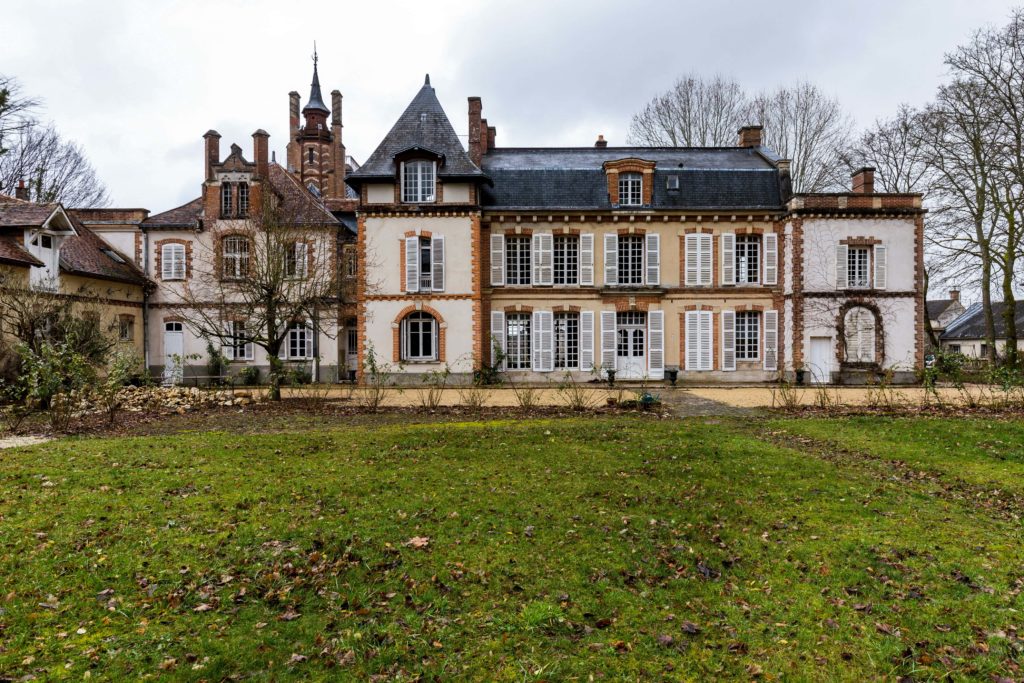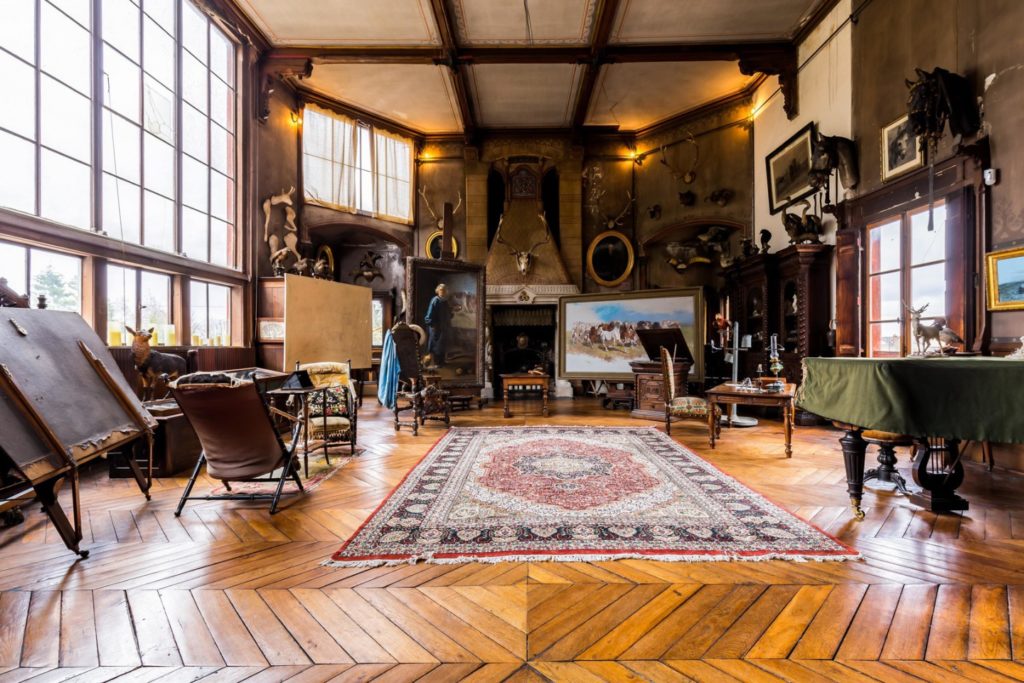Living an unconventional life by being sort of a tomboy, Rosa Bonheur achieved international fame with her monumental depictions of animals. Her legacy, though overlooked after her death, started to be re-examined in the 80s
artistic training and development
Daughter of a liberal drawing master, Marie-Rosalie Bonheur spent her happy childhood years in the countryside near Bordeaux, before the family settled in Paris in 1829. She entered primary education when her mother died, then started to be trained as a seamstress.
Raymond Bonheur supported the artistic abilities of his children, so that Rosa devoted herself to painting and drawing entirely aged 13 as an apprentice to her father. She used to go to the Louvre, copying from the Masters.
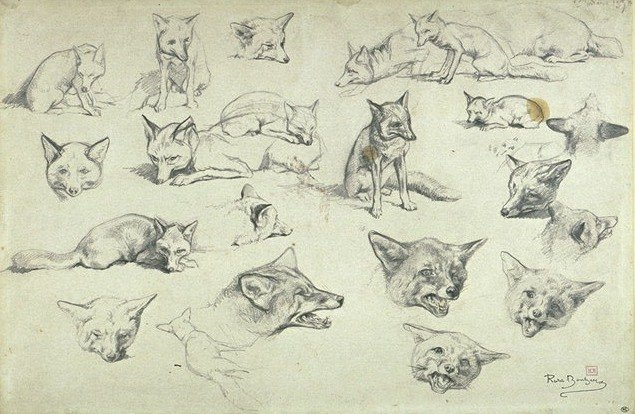
In 1839, she began studying animals from nature. She exhibited her work in public for the first time aged 19. In 1848, her prizes enabled her to get a state commission, attracting many wealthy patrons amongst her clients.
This came to be a canvas of great dimensions, Ploughing from the Nièvre (up above). It was so successful at the Salon that the Fine Arts School Headmaster had it acquired by the Museum of Living Artists in the Luxembourg Gardens. The same year, Bonheur took over her father, managing the School of Design for ladies, keeping this position until 1860. “Follow my lead” she told her students “and I’ll make Leonardos in frocks out of you”.
painting like a man
After the Salon of 1853, the monumental painting The Horse Fair got internationally famous, hailed as “manly” by reviews. The picture went touring to Belgium and was shown to Queen Victoria, before travelling to the U.S where it was bought for about 500$.
Bonheur entertained this notoriety by giving interviews and spreading engraved reproductions of her work. At the World Fair of 1855, she displayed Haymaking in Auvergne, for which she was awarded a gold medal. From 1856 onwards, she didn’t need to send works to the Salon anymore, as the whole of her production was already sold in advance.
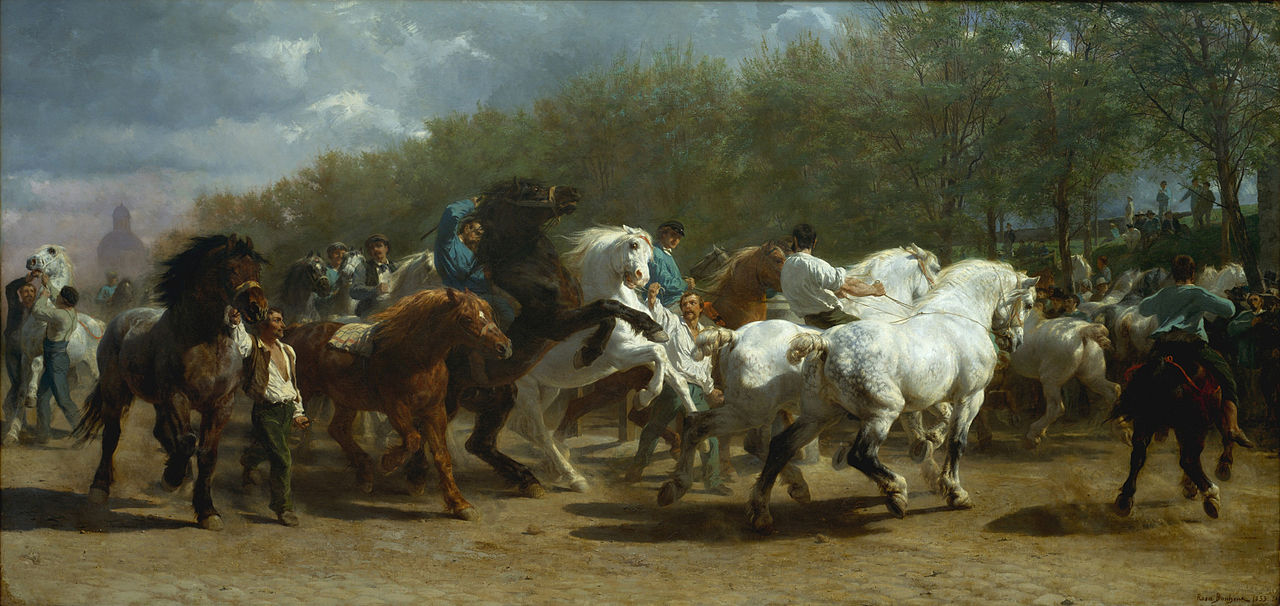
Oil on canvas, 244 x 507 cm
Metropolitan Museum of Art, New York
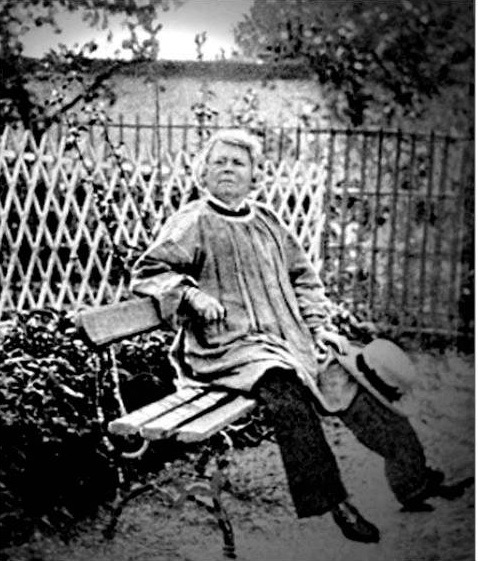
Rosa Bonheur obtained from the Police Headquarters a licence to wear male garments to go to livestok markets and slaughterhouses, renewable every 6 monts. She crafted her financial and emotional identity as an independent woman. Remaining single for her whole life, she lived with childhood friend and painter Nathalie Micas. Wearing her hair short and smoking, she practiced shooting and horseriding in male garb but her lifestyle wasn’t considered particularly scandalous. Bonheur always wore gowns while appearing in public. “I’ve always led a decent life” she used to say “I’ve never wished to give up my freedom in order to fulfil the saintly mission I’ve been granted. I’ve always wanted to elevate women”. This reveals her refusal to be confined to gender roles, while adapting herself to certain codes required by her condition.
fame
Praised by her male counterparts (Eugene Delacroix, Theodore Gericault and Camille Corot), Rosa Bonheur became the richest artist of the century. At the age of 37, she was the first woman capable of purchasing a mansion house thanks to her work in By, near the forest of Fontainebleau.
She had a large Neo-Gothic styled studio built, using modern materials. The framework was in metal, while she required an electrical system to obtain the right amount of light needed for her practice. The park was created for pets and wild animals to trod by. Restored since 2017, the manor is open to the public by booking slots.
In 1864, Empress Eugenia, wife of Napoleon III, paid her an unexpected visit to invite her to the Castle of Fontainebleau, as shown in the watercoloured engraving below. Busy then at Deer on the Long Rocks, she recalled in a letter to her brother: “her Majesty suprised me with her whole court, you can reckon I wanted to hide away first. I was fortunate enough to be able to take off my overalls to put a jacket on”.
The following year, Eugenia came back to grant her the emblems of the Legion of Honour. This Marie-Antoinette fan who had supported the election of writer George Sand at the French Academy explained that she wanted to “show that genius has no sex”. Rosa Bonheur was the first woman artist to obtain this accolade, promoted to the rank of Officer in 1894. Till then, women could receive the award for acts of bravery or services given to the nation.
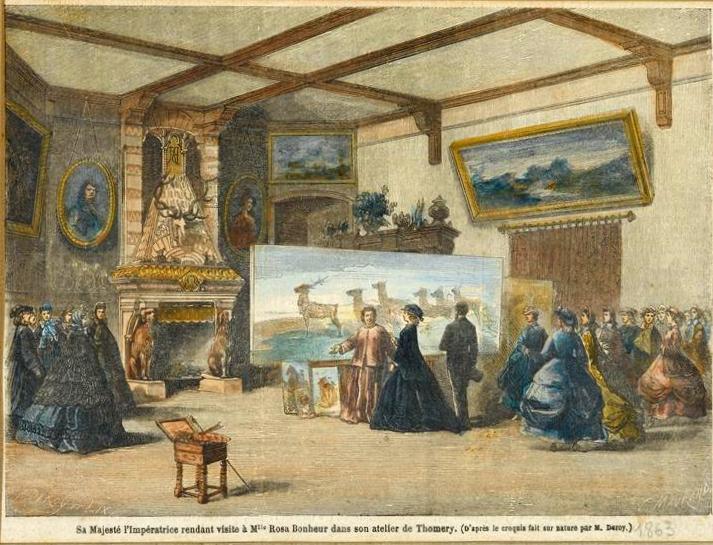
In 1867, Bonheur showed her work in public again at the World Fair. She travelled extensively, meeting political and artistic celebrities such as President Sadi Carnot or Buffalo Bill. The latter had come to Paris in 1889 to present his show to the French public. He allowed her to evolve freely in his camp of Neuilly, so that she could sketch from his animals. As a token of her gratitude, she depicted the American huntsman in an equestrian portrait. When his house in Nebraska took fire, Buffalo Bill begged his sister to save just the picture; the rest could go to the flames.
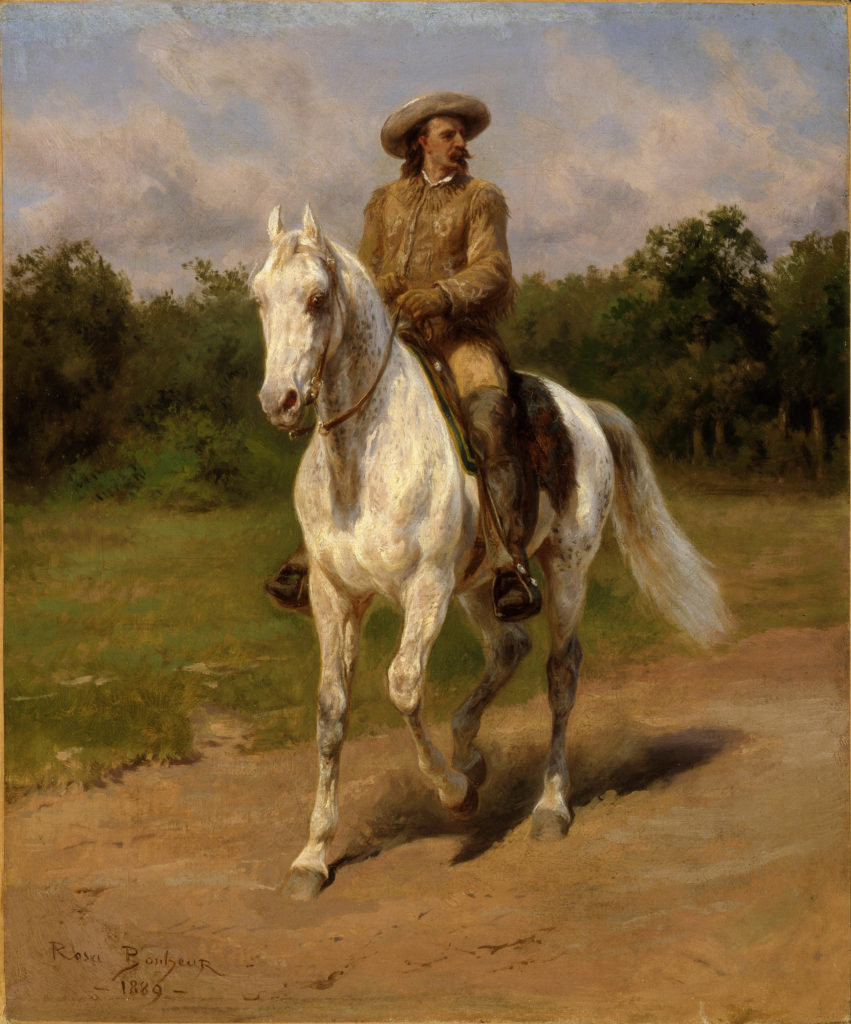
Oil on canvas, 46.9 x 38.7 cm
Whitney Gallery of Western Art Collection, Wyoming
legacy
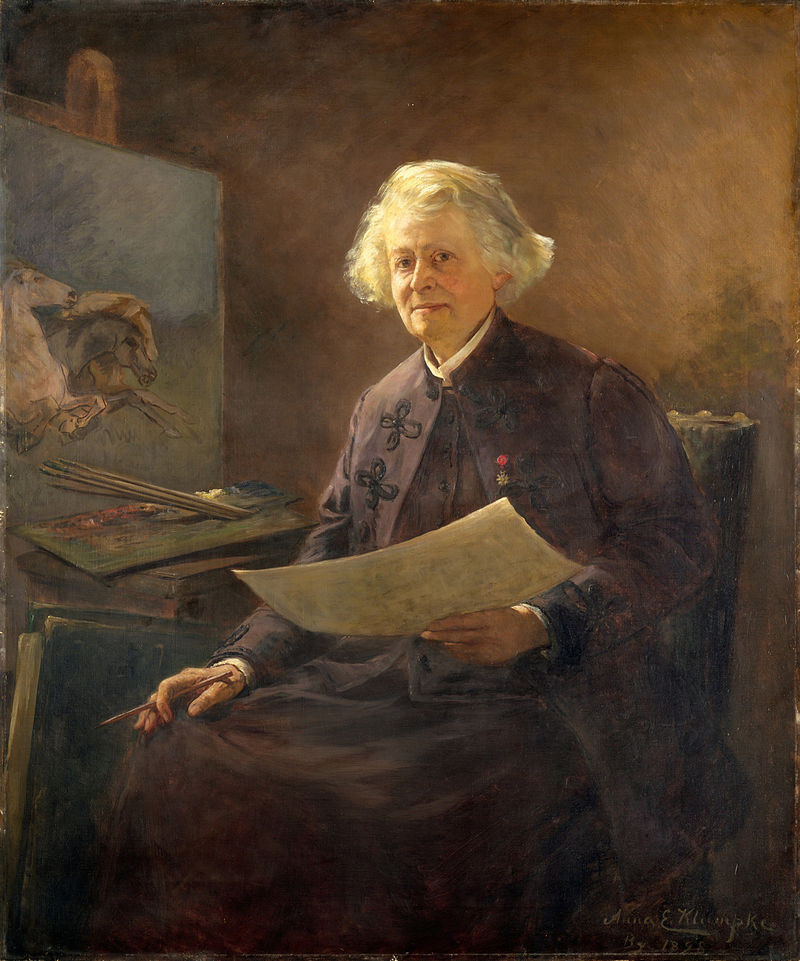
Met in 1889 after the death of Nathalie Micas, American painter Anna Klumpke (1856 – 1942) came to the Castle of By to make several portraits of Rosa Bonheur and help her writing her memoirs. Suffering from lung congestion without being able to complete the piece meant for the 1900 World Fair, the painter made Anna Klumpke her legal heir. Klumpke wrote her friend’s biography and took care of her oeuvre, recording 2100 paintings, watercolours, drawings, engraving and sculptures. Today, the majority of public French collections are stored in the Prints and Drawings Departement of the Louvre, in the Fontainebleau Palace and at the Fine Arts Museum of Bordeaux. Buried in the Pere Lachaise Cemetery, Rosa Bonheur rests in the plot bequeathed by the Micas family, with Nathalie and Anna Klumpke, whose remains were transferred from the States in 1948.
Rosa Bonheur became a role-model for 20th century women artists, but her artistic practice was deemed conservative and outdated as opposed to modernist movements that obscured her career and made her fall into oblivion. Some critics and artists of the avant-garde (Paul Cezanne being quite negative about her work) associated her to bourgeois values. Her production was re-discovered at the end of the 80s, thanks to the travelling retrospective of 1997 in Bordeaux, Barbizon and New York.
Styles and techniques
Rosa Bonheur evolved at the margins of current artistic movements, even if she remained close to the school of Barbizon, Realism and plein-air techniques. She deliberately chose to devote herself to anatomy, background landscape-painting and the great format, rather than small genre scenes or still-life. She enjoyed portraying pets from wealthy art dealers, conveying the beauty of animal bodies, their attitudes and presence. Worth noticing is the rendering of fur variety, and the expression of their eyes. Unlike Gericault’s exoticism or the sentimentality of contemporary animal painting, Bonheur’s subjects are not made to look like humans or heroes, to adopt their personalities.
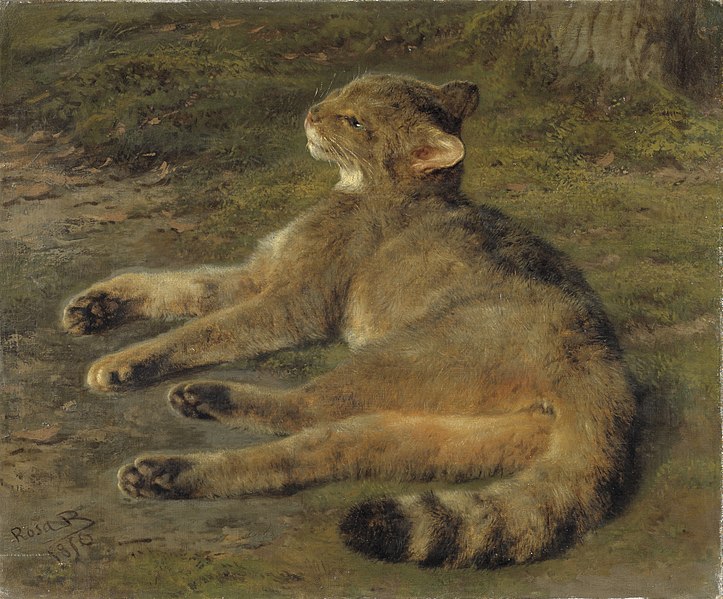
Wild Cat
Oil on canvas, 46 x 56 cm
Nationalmuseum, Stockholm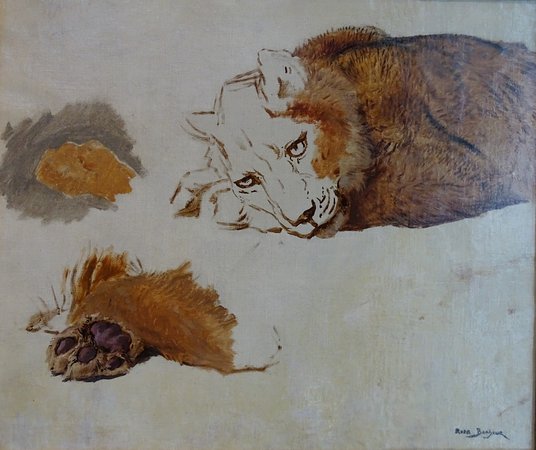
Study of a Lionness
Art and History Museum of Langres
To proceed, she made thousands of preparatory sketches, drawn or sculpted, enabling her to transcribe the character of each species. Her palette is characterised by coloured, neat brushwork. Her minute translation of light associated to energetic outline allows her to enoble the rural environment.
Some sketches reveal a keen sense of humour, though. In her series of the “Truthful Adventures of Lady By”, she appears in comical situations along with her dear pets. Some of these pieces have been digitised on the Orsay Museum website: www.musee-orsay.fr/fr/collections/catalogue-des-oeuvres/resultat-collection.html
Fancy to know more? You can book a tour at the Orsay (womensarttours.com/visite/danger-women-at-work/) or the Pere Lachaise Cemetery (womensarttours.com/visite/ghosts-of-women-past-in-the-pere-lachaise/).
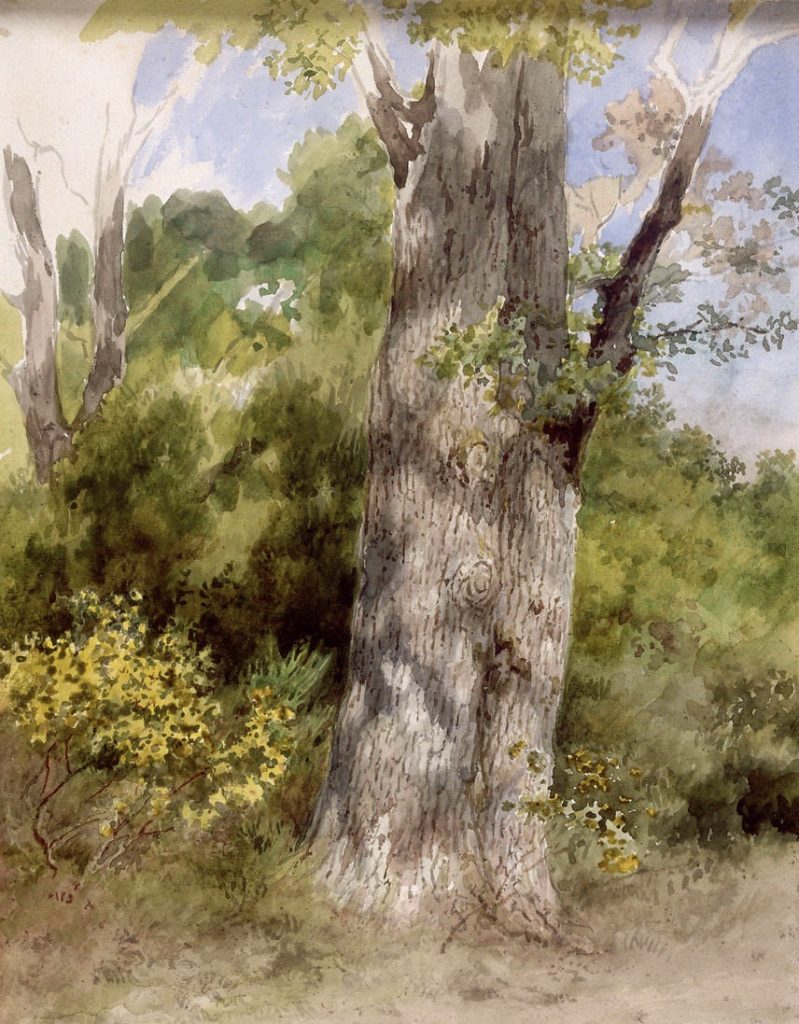
The Big Oak Tree, black ink
and watercolour on paper
Musée d’Orsay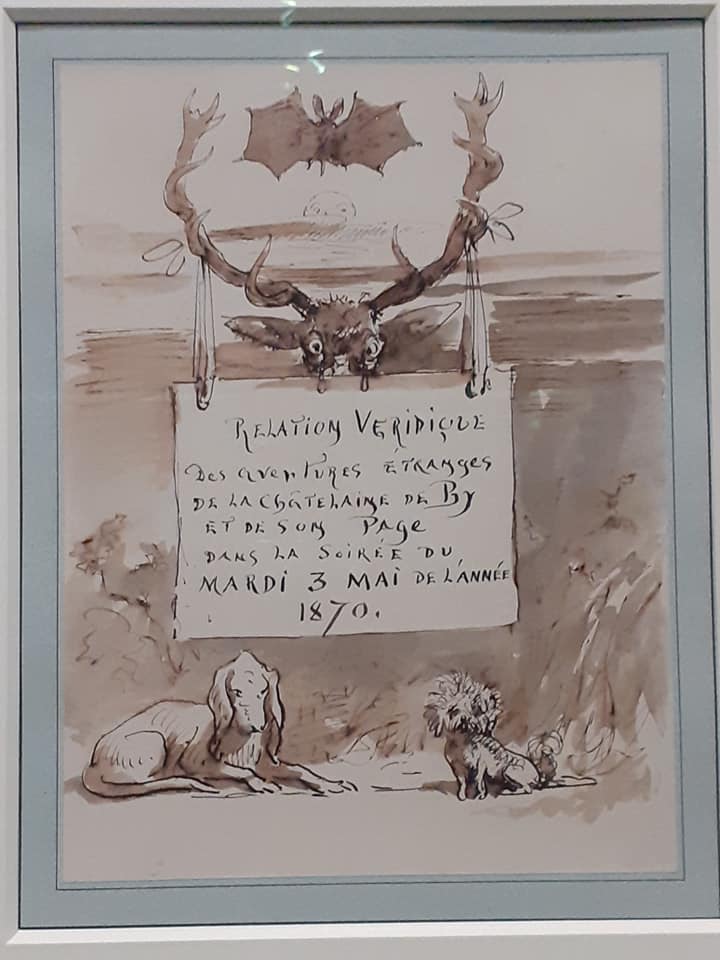
The By Lady’s Adventures
1870, pen, ink and wash on vellum paper
12.7 x 20.2 cm, Musée d’Orsay

